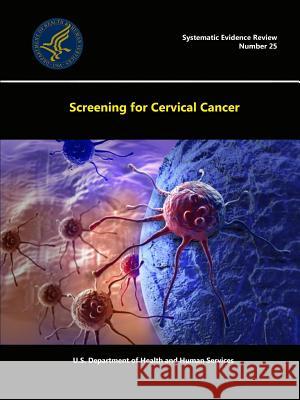Screening for Cervical Cancer - Systematic Evidence Review (Number 25) » książka
Screening for Cervical Cancer - Systematic Evidence Review (Number 25)
ISBN-13: 9781329660335 / Angielski / Miękka / 2015 / 166 str.
Screening for Cervical Cancer - Systematic Evidence Review (Number 25)
ISBN-13: 9781329660335 / Angielski / Miękka / 2015 / 166 str.
(netto: 98,04 VAT: 5%)
Najniższa cena z 30 dni: 102,38
ok. 16-18 dni roboczych
Bez gwarancji dostawy przed świętami
Darmowa dostawa!
The evidence we reviewed indicates that a reasonable age at which to initiate cervical cancer screening in women is age 21. Screening before this age is complicated by relatively high rates of transient HPV and regressive cervical abnormalities, with very few actual cancer cases. Current data cannot assure that beginning screening after this age is clearly safe, particularly in the United States, which has no centralized national cervical cancer screening program. For cytology-based screening, LBC does not differ from CC in sensitivity, specificity, or relative CIN detection, but may yield a lower proportion of unsatisfactory slides. Cost, overall screening strategy, and other considerations may also pertain to local decisions on which approach to use for collecting cytology samples. In women older than age 30 years, a single HC2 test is clearly more sensitive for CIN2+ and CIN3+ (about 40% greater) than cytology alone. However, a single HC2 test is also 3 to 5 percent less specific than cytology.
The evidence we reviewed indicates that a reasonable age at which to initiate cervical cancer screening in women is age 21. Screening before this age is complicated by relatively high rates of transient HPV and regressive cervical abnormalities, with very few actual cancer cases. Current data cannot assure that beginning screening after this age is clearly safe, particularly in the United States, which has no centralized national cervical cancer screening program. For cytology-based screening, LBC does not differ from CC in sensitivity, specificity, or relative CIN detection, but may yield a lower proportion of unsatisfactory slides. Cost, overall screening strategy, and other considerations may also pertain to local decisions on which approach to use for collecting cytology samples. In women older than age 30 years, a single HC2 test is clearly more sensitive for CIN2+ and CIN3+ (about 40% greater) than cytology alone. However, a single HC2 test is also 3 to 5 percent less specific than cytology.











